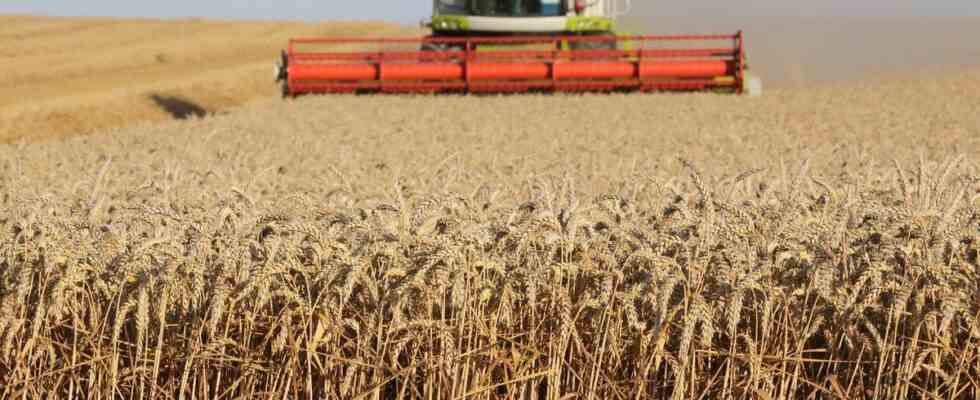“Are these little strands of wheat? » « Yes yes exactly it is wheat ». On the set of the 1 p.m. news on Friday September 16, presented by Julian Bugier, France 2 broadcast a subject on “the ecological supplies of tomorrow”. At the helm of this column, a journalist presents, among other things, an initiative that has provoked many reactions on social networks. This is a cardboard sleeve made from agricultural waste.
According to the journalist, only 20% of the wheat is actually used. Anything that is not seed, ie “the stem or the plants”, would be destroyed or burned by the farmers. The brand in question reuses these remains and “the environmental impact is reduced by half”, compared to the manufacture of conventional cardboard.
A great initiative in short, which would almost make you want to get this cover for the start of the school year. Except that after the broadcast of this column, many Internet users mocked the ignorance of the channel on the subject. “I’m a farmer, and for me, it’s obvious that it’s bullshit”, evokes a first. “The level of disconnection”, accuses a second. But what becomes of the wheat after the grains have been used? 20 minutes make the point.
FAKE OFF
First of all, it is worth going back to the roots of this “Tree Free” cover. It is manufactured by the Jalema brand, an office supply distribution company. In February 2022, the brand also published a video on Youtube to present this cover with all the elements reported by the journalist from France 2. “We grow more and more food products such as wheat, cereals and rice. Only 20% is used for food production, the remaining 80% is waste and is burned. It is a waste ! »
We contacted the Jalema company to understand where this data came from. She sent us away to a publication from the Paperwise website, another eco-responsible hardware company. “When processing crops such as rice, wheat, barley, cereals, maize, hemp and sugar cane, 80% of the plant – in this case the stems and leaves (agricultural waste ) – sits unused,” writes Paperwise and adds, “In very low-income developing countries, hundreds of millions of small-scale farmers only receive income for food that grows on the plant, or 20% of the crop. “.
A forbidden act
The problem is that these statistics cannot be linked to agriculture in France. The remaining 80% are in no way destroyed, much less burned. Moreover, a 2020 decree linked to the Common Agricultural Policy (CAP) prohibits the burning of residues of straw, oilseed crops, protein crops and cereals. “At the harvest, the straw is always recovered for different uses”, explains the interprofessional association Intercereals. It can be found for example in breeding, in particular to feed animals, but also as bedding. This represents 65% of its use, according to the Common Straw Bureau of the cereal sector.
“It can also be left in the field, a bit like a fertilizer, in order to fertilize the field for the next crop”, underlines the Intercereals association, which estimates this figure at 30% of its use. Very minimal use, the rest of the straw can also be used in industry, especially for insulation.
“A verbal forgetfulness”
Monday, France 2 channel explained, through a tweet, that the error would be partly explained by “an oversight in the oral during the live”. “During her column, the journalist had to say in developing countries”, justifies the channel.
As expected, a corrigendum was published in the 1 p.m. newspaper on Tuesday. During her column “A euro near”, the journalist explained the reasons for this error. “We wanted to clarify that in France, of course, crop residues from farmers were of course recycled in different ways. But this is not the case everywhere in the world, ”recalls the journalist. “Nothing is lost, everything is transformed, it’s good to say,” concluded Julian Bugier.

